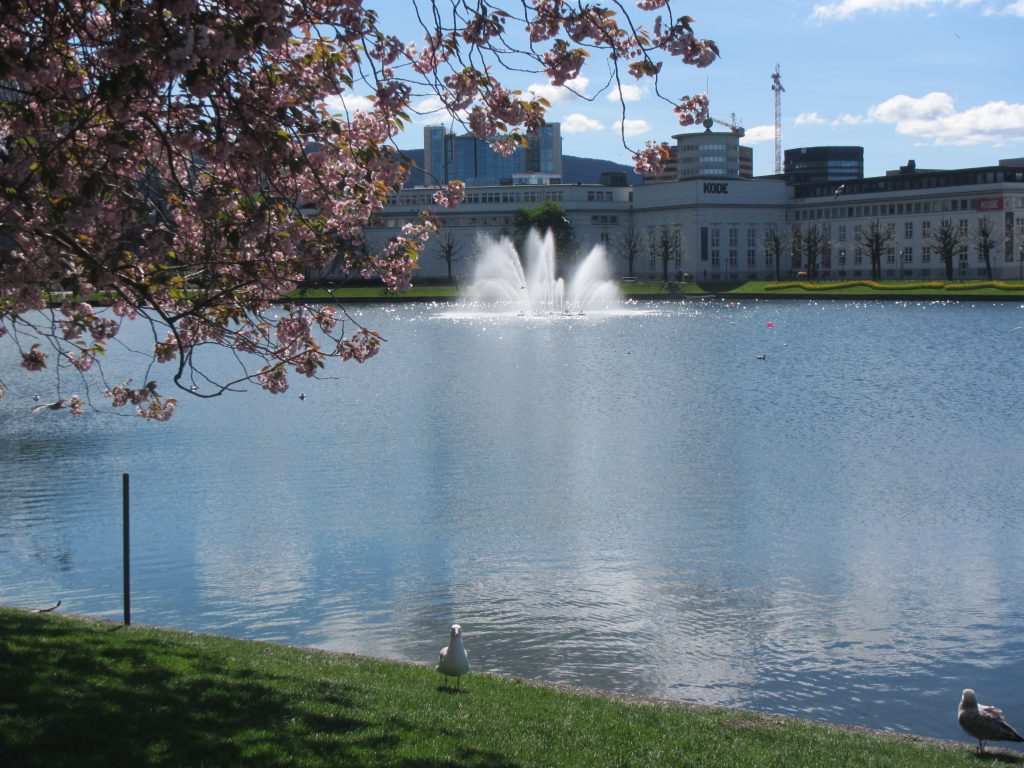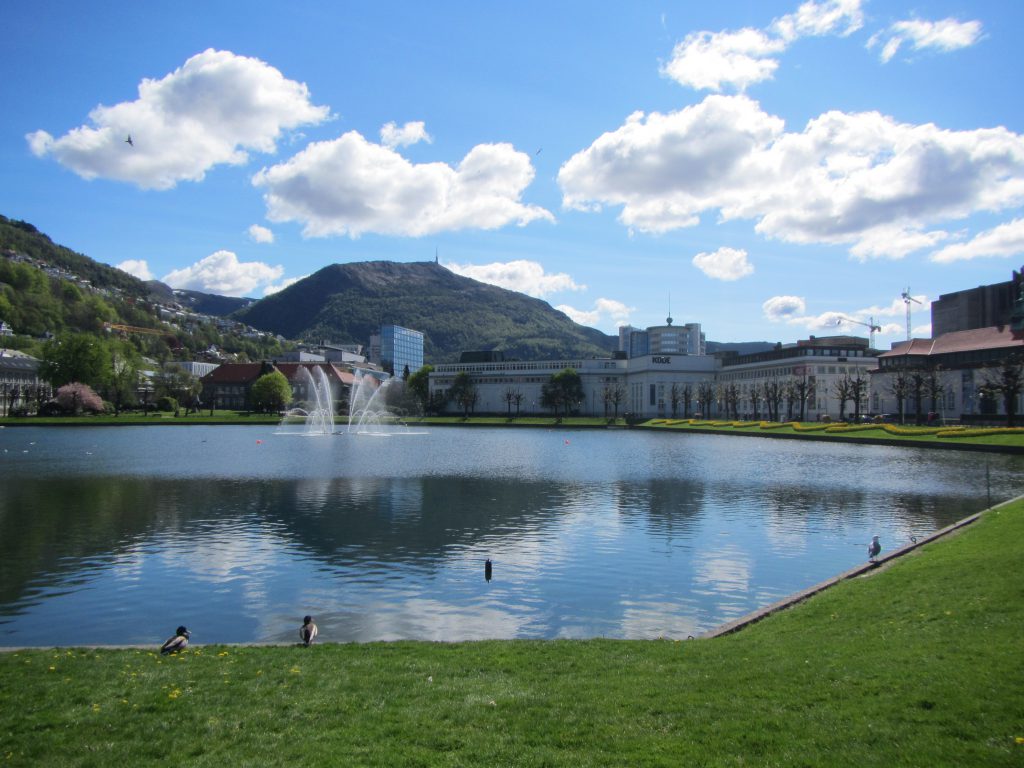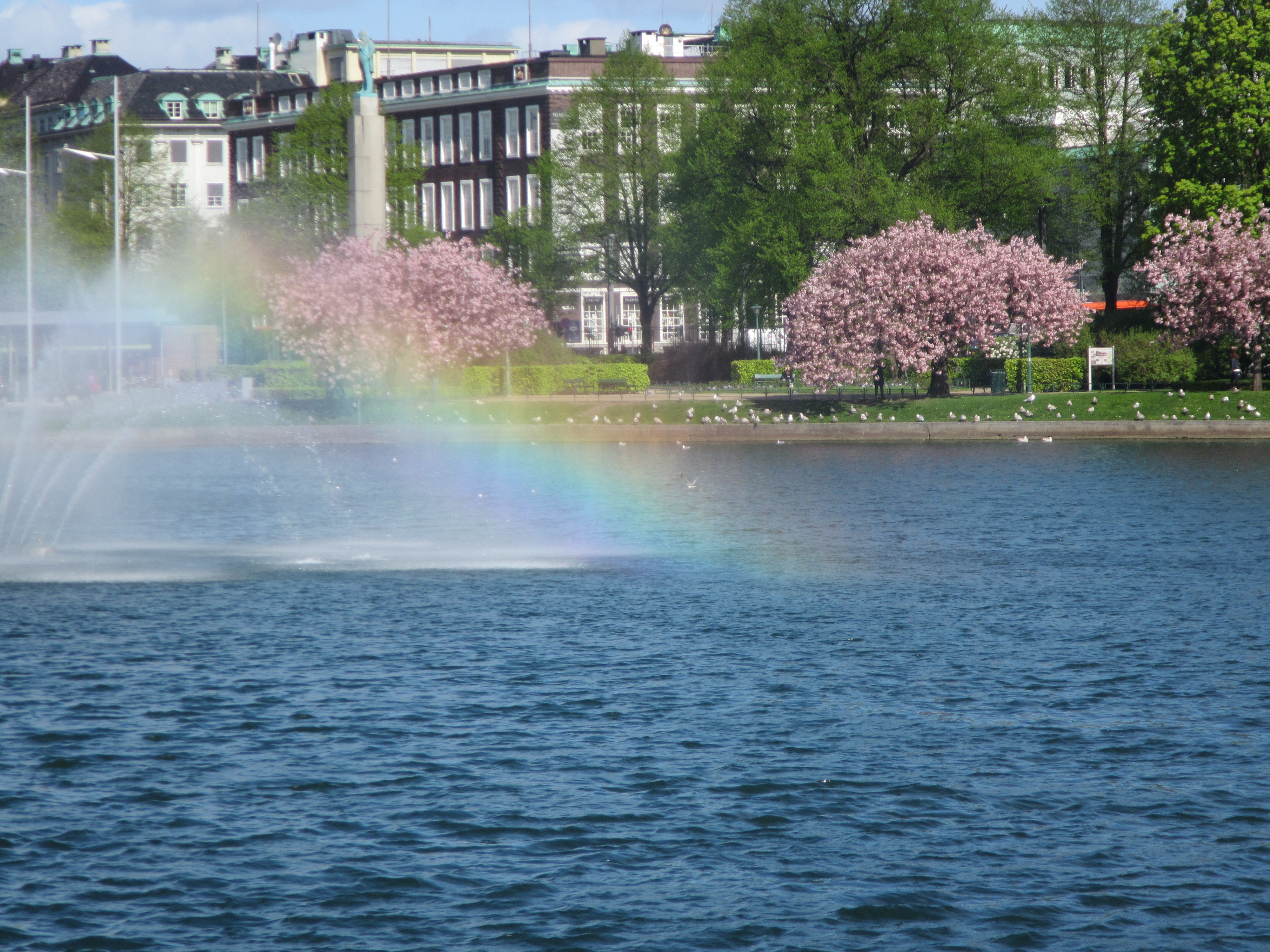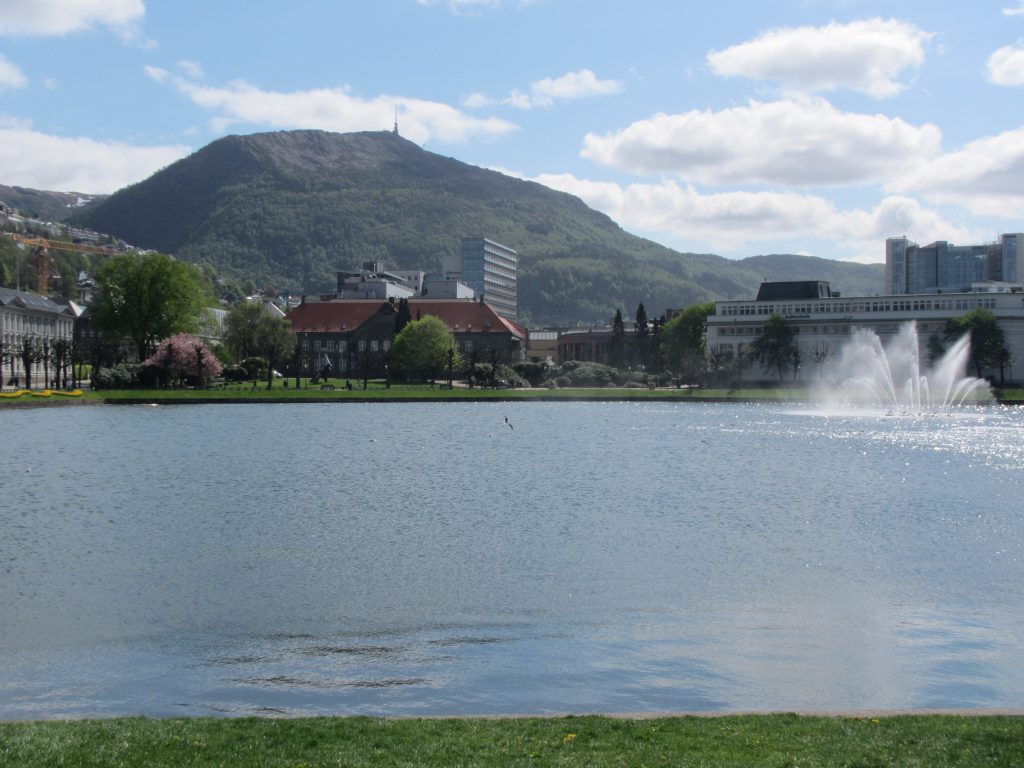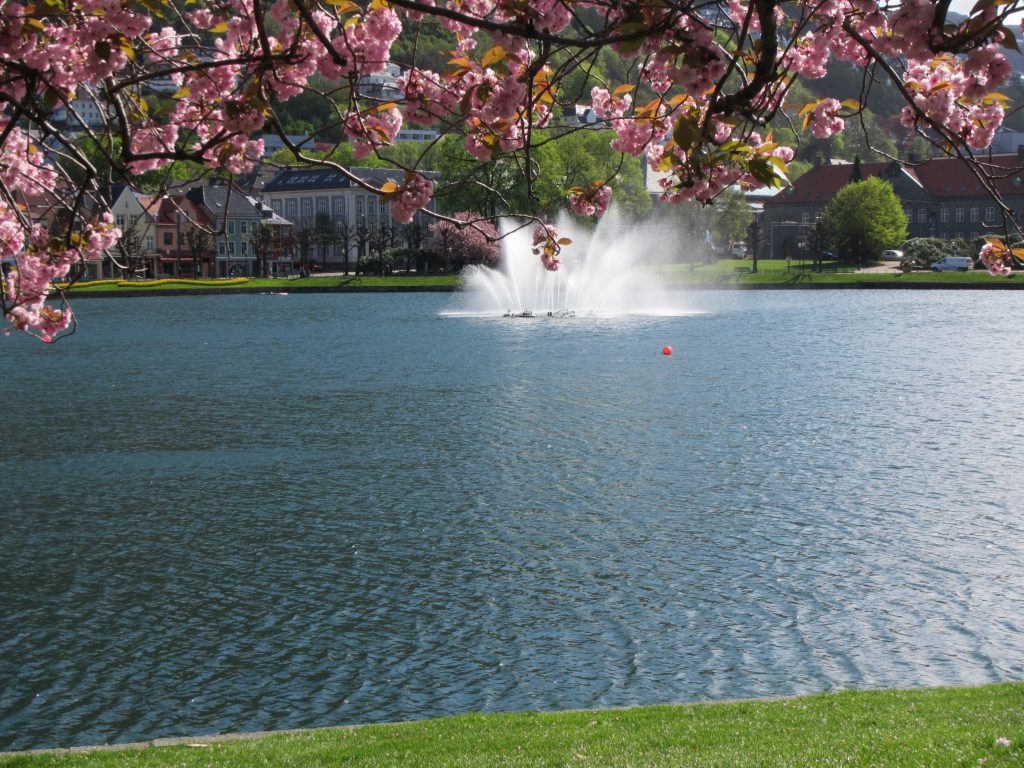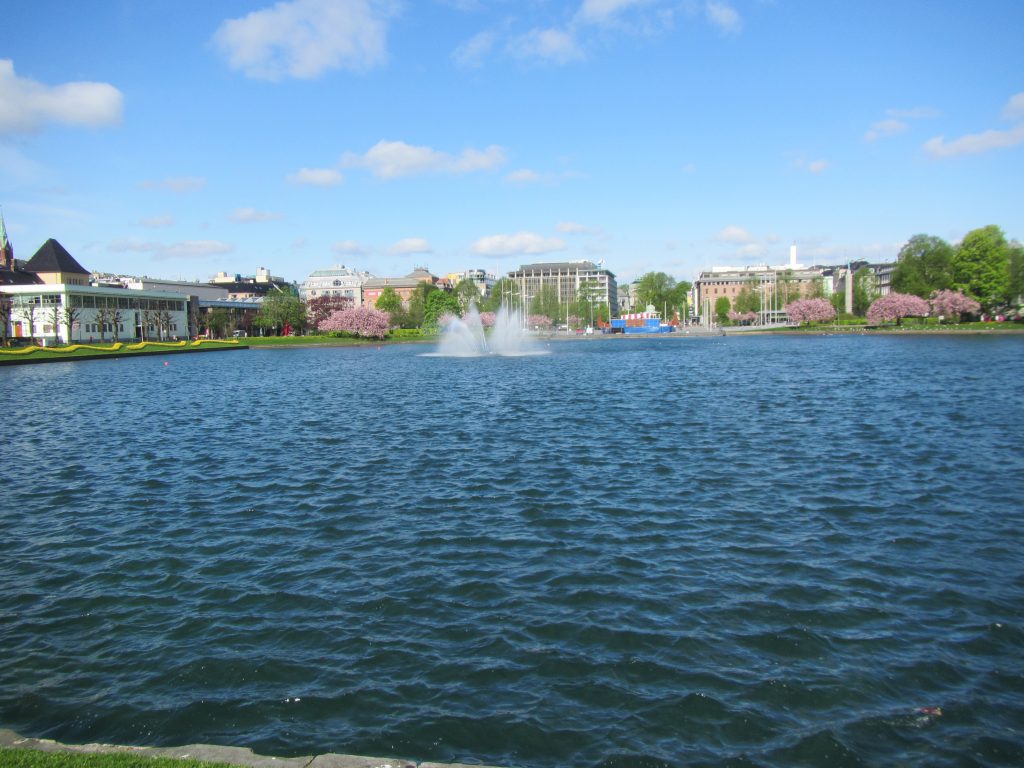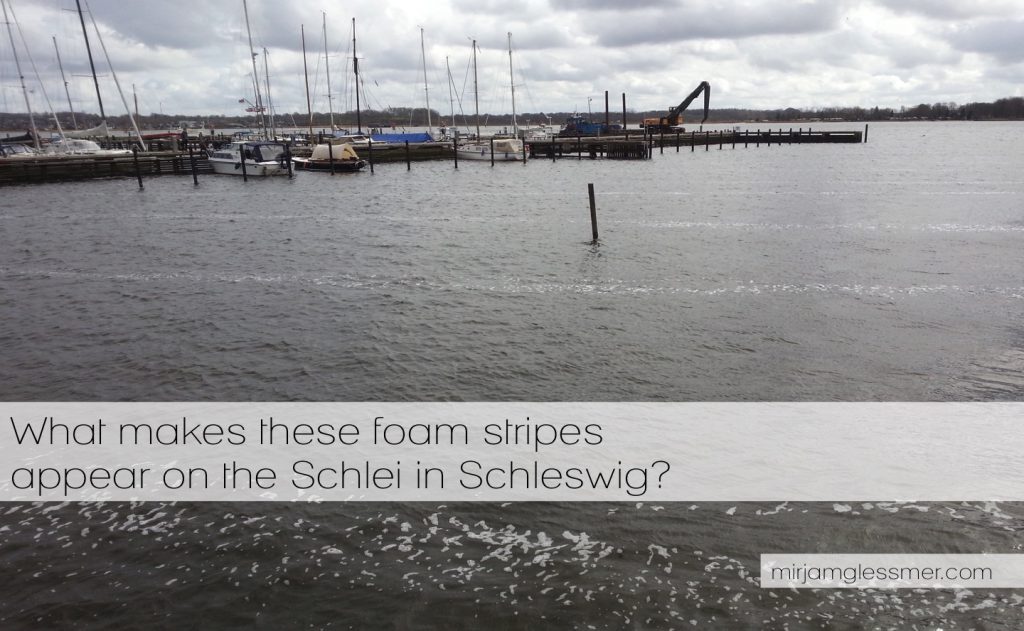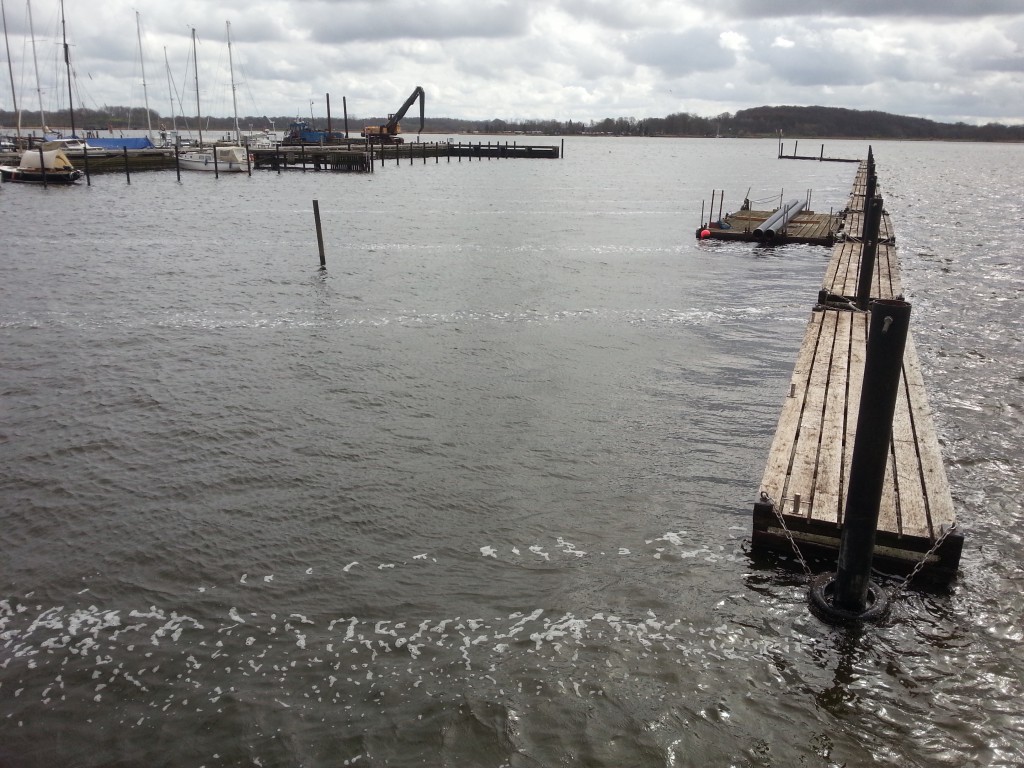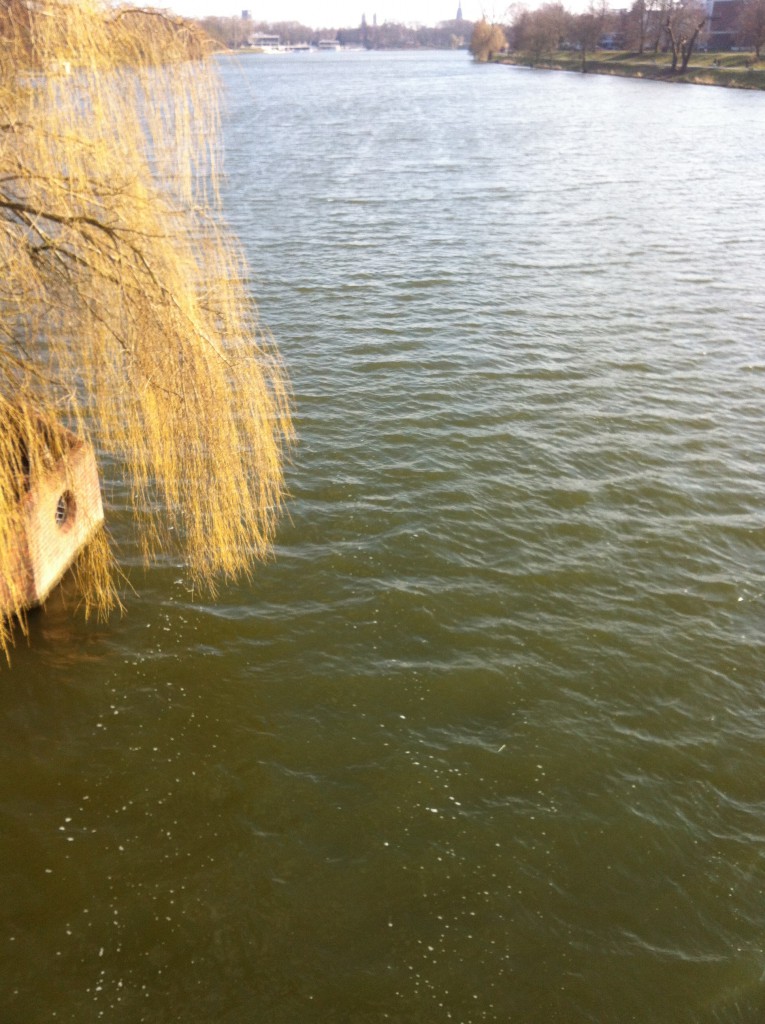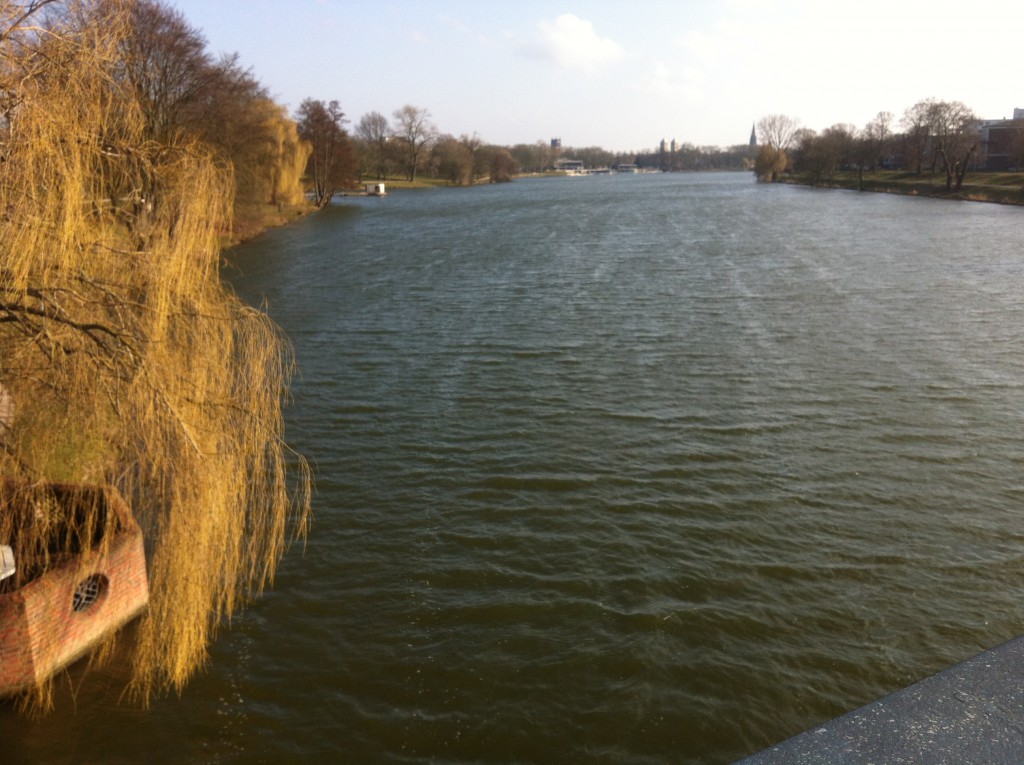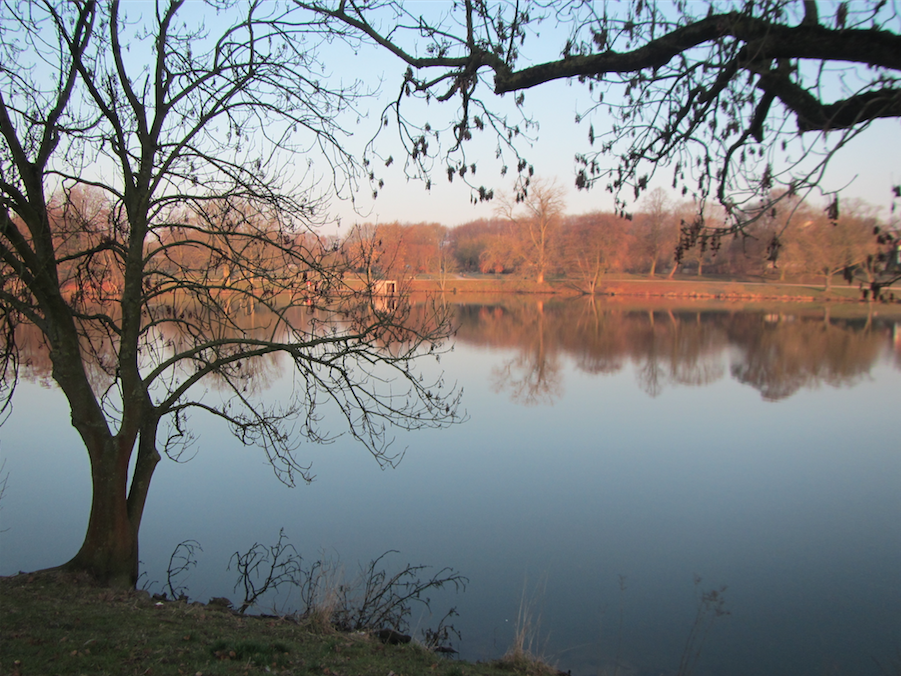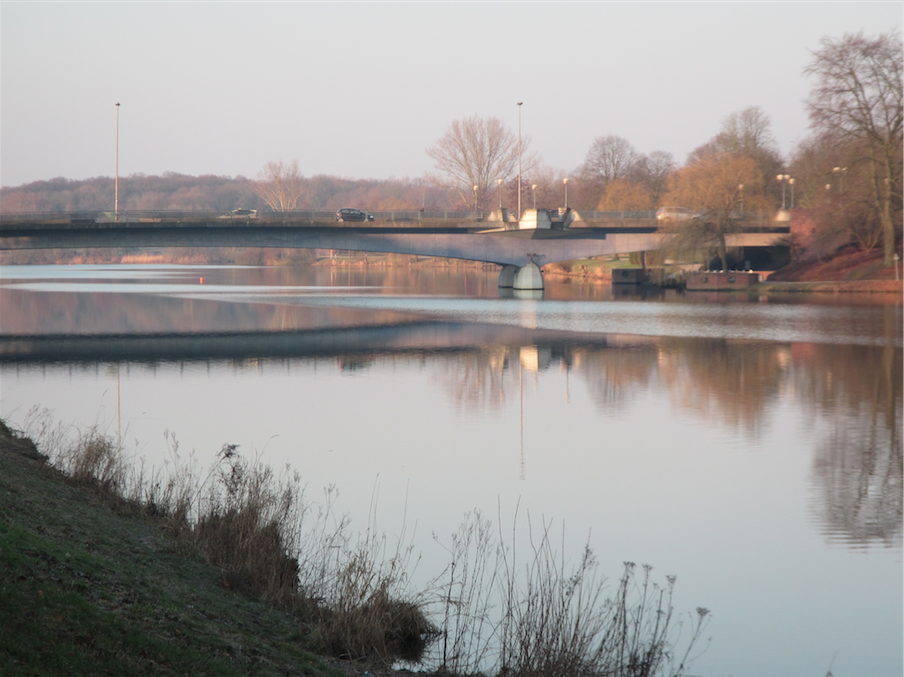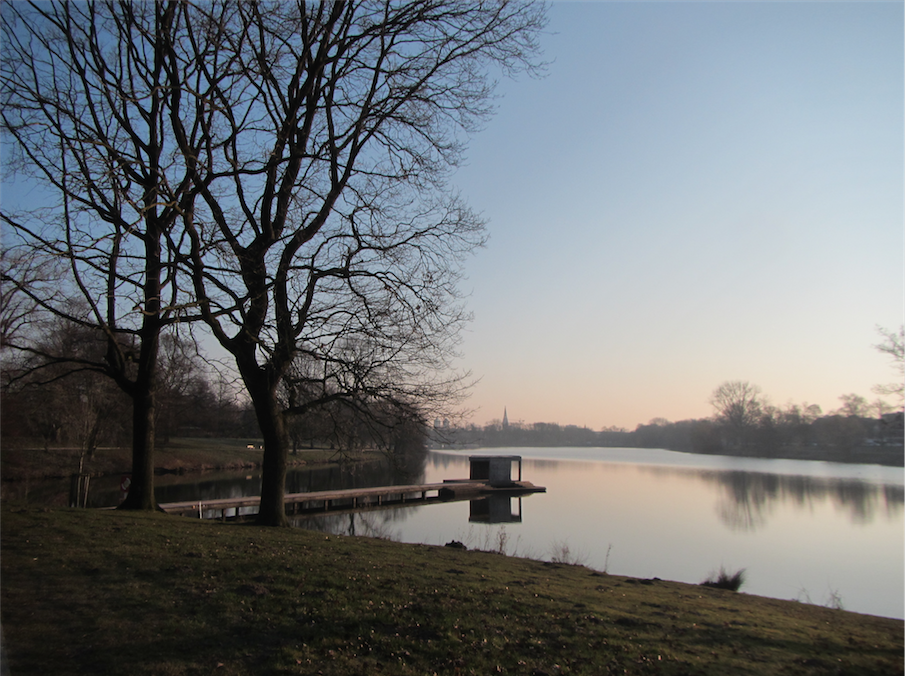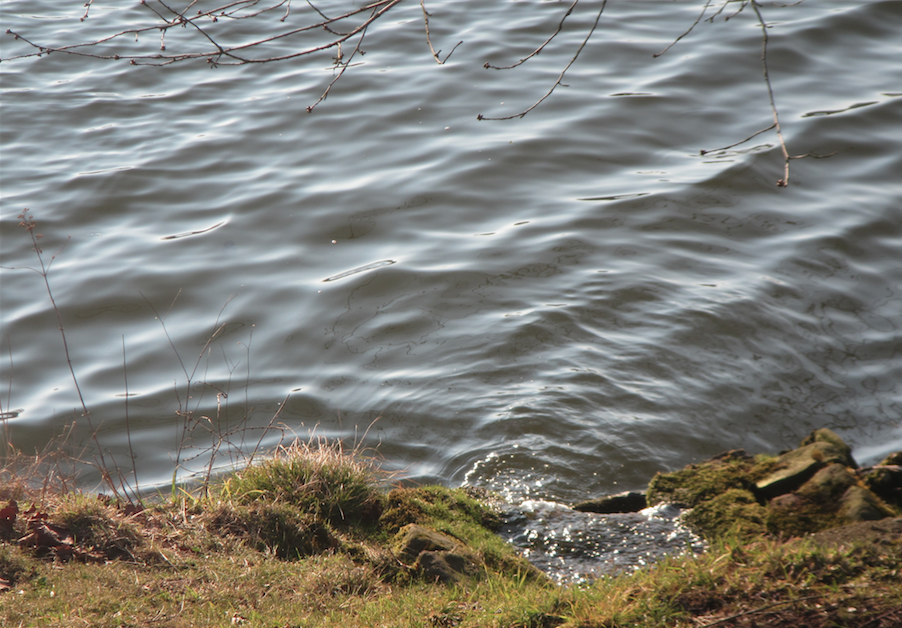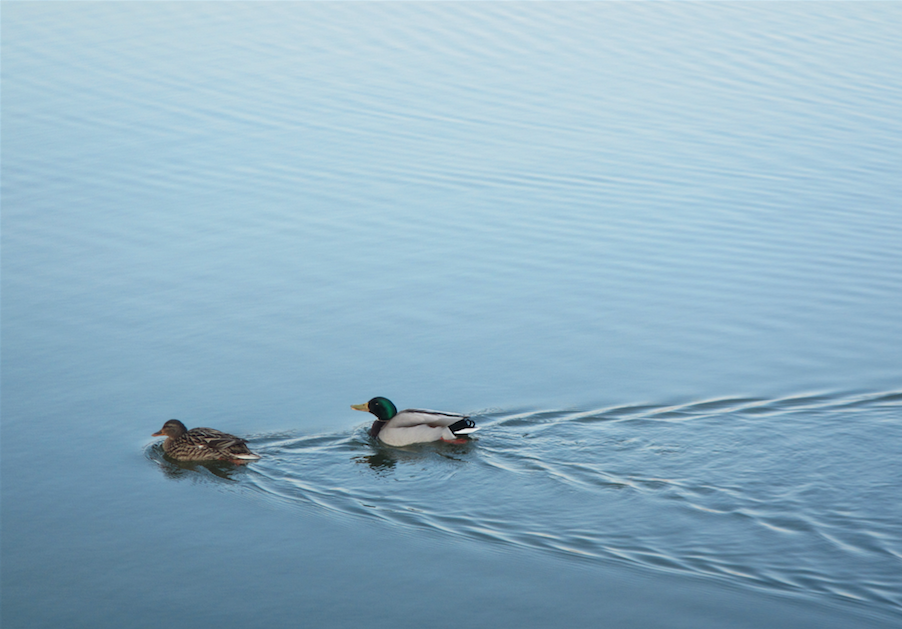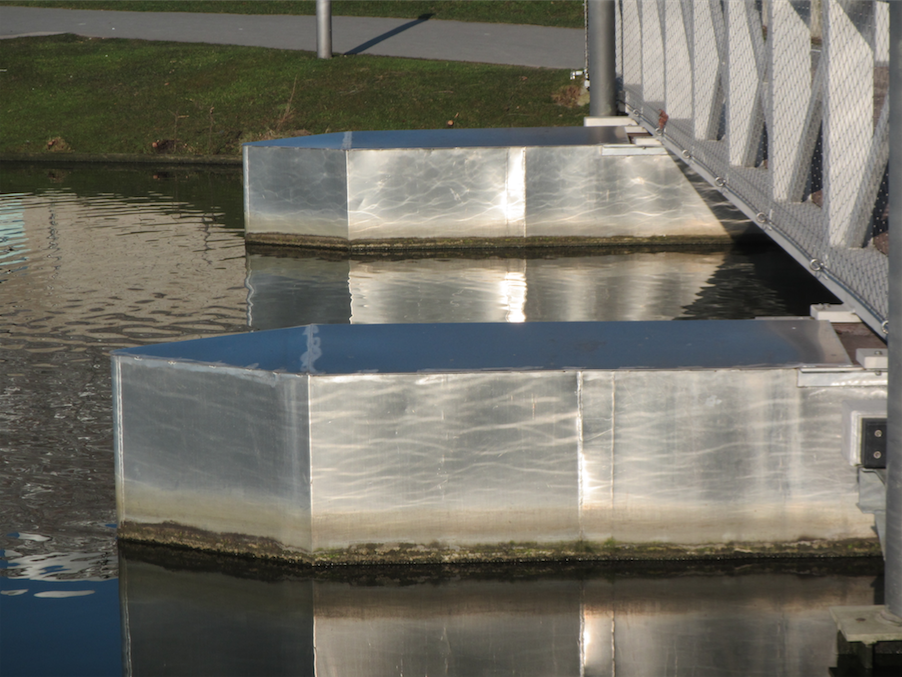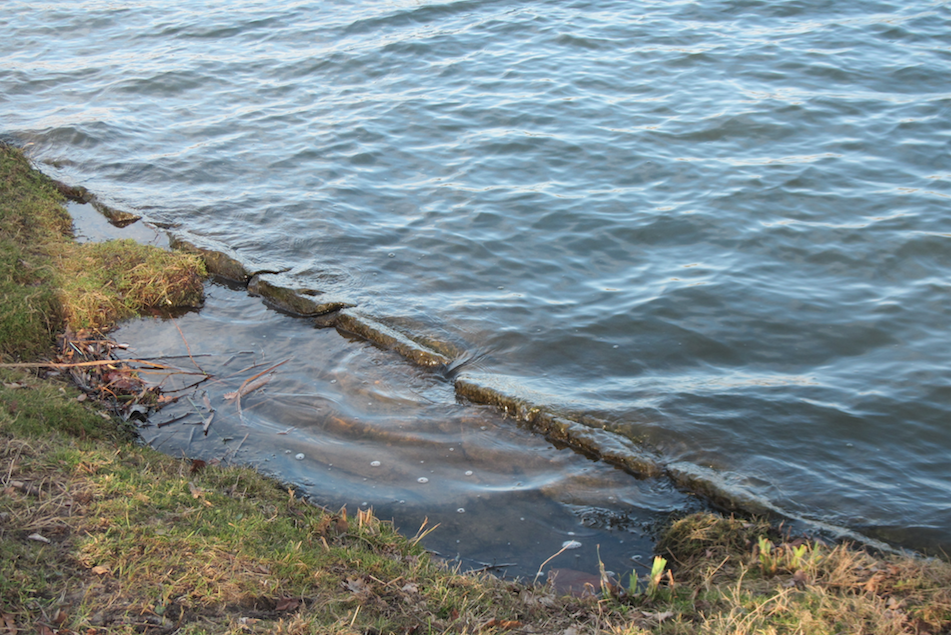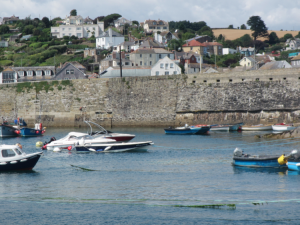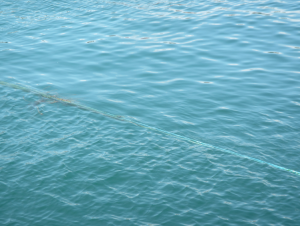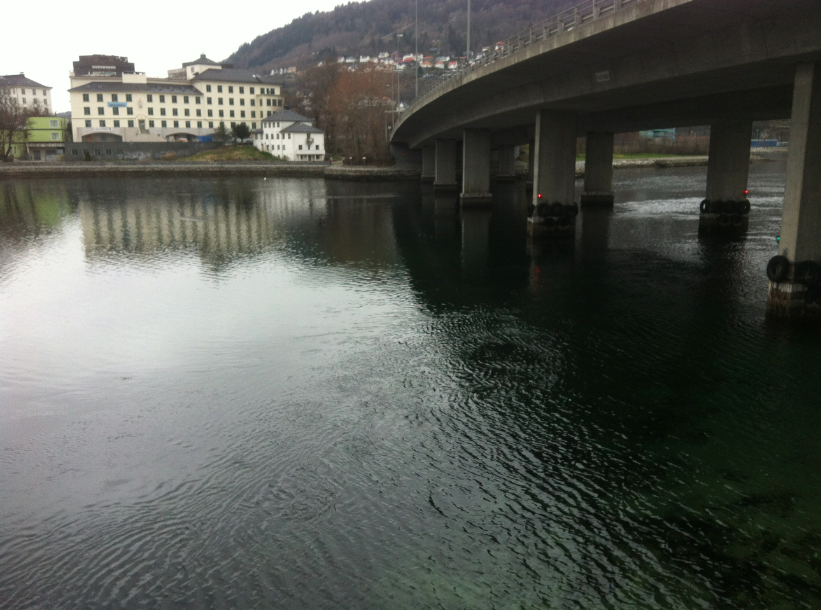I recently started looking at waves in “urban environments” (in contrast to “on the sea”) with a new found fascination. The reason why will be revealed soon, but for now just know that there are more waves coming up on this blog!
Today, let’s start by looking at more waves on Store Lungegårdsvannet, like we did before.
Here, you look downwind and see the flat water right in front of you, shaded from the wind by the walls around the lake. And then the further away you look, the larger the waves grow.
Another very funny picture of a similar situation below: See how parts of the lake’s surface reflect the buildings and mountains and clouds really well (since that part of the surface is really flat), whereas other parts are way too choppy and appear a lot greyer on the picture?
Yes, I admit, the purpose of this blog post was not so much to talk about waves as to show you how beautiful Bergen is in May. I miss this city… And my AMAZING Bergen friends!!! <3
